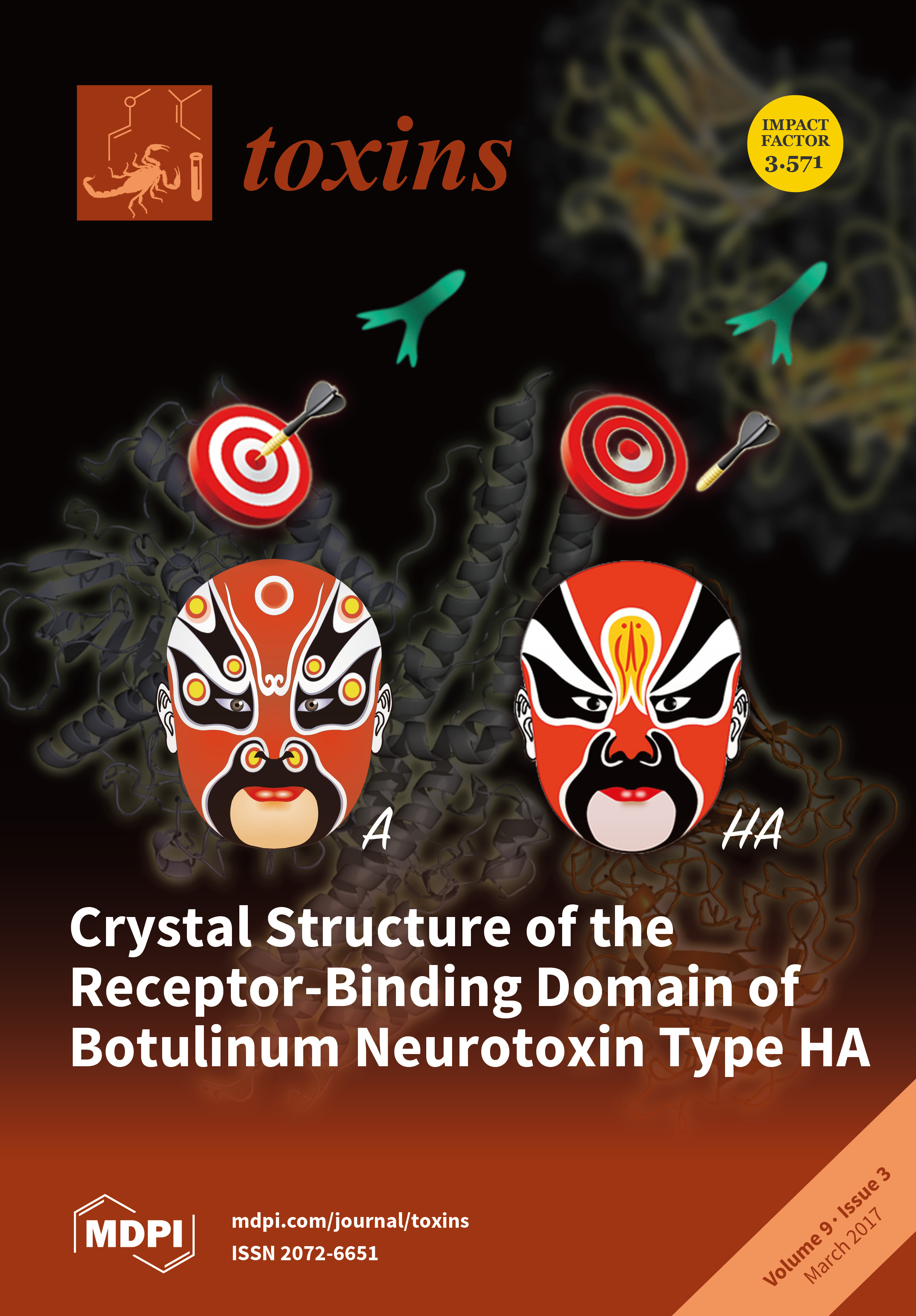Crystal Structure of the Receptor-Binding Domain of Botulinum Neurotoxin Type HA, Also Known as Type FA or H.
Publication Type:
Journal ArticleSource:
Toxins (Basel), Volume 9, Issue 3 (2017)Abstract:
<p>Botulinum neurotoxins (BoNTs), which have been exploited as cosmetics and muscle-disorder treatment medicines for decades, are well known for their extreme neurotoxicity to humans. They pose a potential bioterrorism threat because they cause botulism, a flaccid muscular paralysis-associated disease that requires immediate antitoxin treatment and intensive care over a long period of time. In addition to the existing seven established BoNT serotypes (BoNT/A-G), a new mosaic toxin type termed BoNT/HA (aka type FA or H) was reported recently. Sequence analyses indicate that the receptor-binding domain (HC) of BoNT/HA is ~84% identical to that of BoNT/A1. However, BoNT/HA responds differently to some potent BoNT/A-neutralizing antibodies (e.g., CR2) that target the HC. Therefore, it raises a serious concern as to whether BoNT/HA poses a new threat to our biosecurity. In this study, we report the first high-resolution crystal structure of BoNT/HA-HC at 1.8 Å. Sequence and structure analyses reveal that BoNT/HA and BoNT/A1 are different regarding their binding to cell-surface receptors including both polysialoganglioside (PSG) and synaptic vesicle glycoprotein 2 (SV2). Furthermore, the new structure also provides explanations for the ~540-fold decreased affinity of antibody CR2 towards BoNT/HA compared to BoNT/A1. Taken together, these new findings advance our understanding of the structure and function of this newly identified toxin at the molecular level, and pave the way for the future development of more effective countermeasures.</p>

